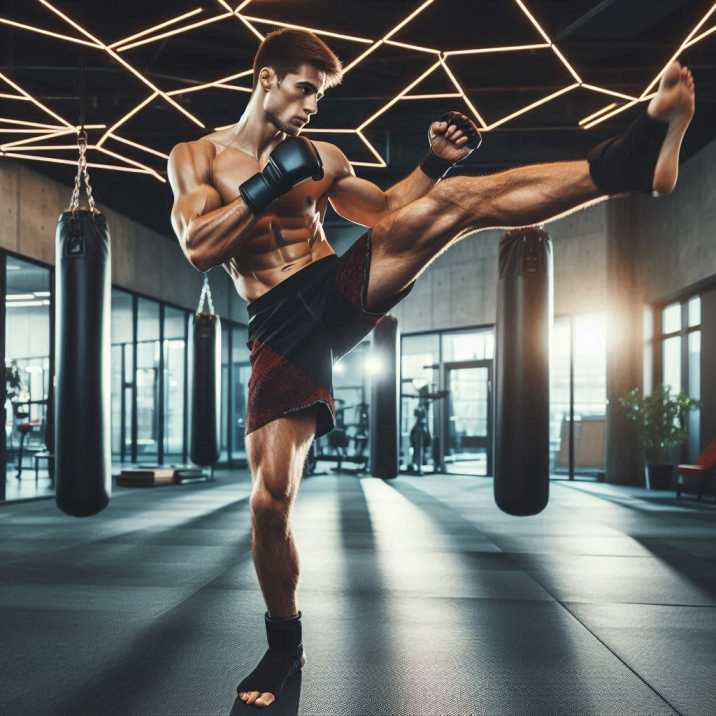Mixed Martial Arts (MMA) has become a global phenomenon, captivating audiences with its blend of skill, strategy, and sheer athleticism. But where did it all begin? This article dives into the origins and evolution of MMA, offering an engaging and informative look at this exhilarating sport.
What is Mixed Martial Arts?
Table of Contents
Before exploring its history, it’s essential to understand what MMA is. Mixed Martial Arts is a full-contact combat sport incorporating techniques from various martial arts disciplines, including boxing, wrestling, jiu-jitsu, karate, and more. Fighters compete in matches where they can use both striking and grappling techniques, making it one of the most comprehensive forms of combat sports.

Ancient Beginnings of Combat Sports
Pankration in Ancient Greece
The roots of MMA can be traced back to ancient Greece with a sport called pankration. Introduced in the Olympic Games in 648 BC, pankration combined elements of boxing and wrestling. It was known for its minimal rules, allowing a wide range of techniques, much like modern MMA.
Gladiatorial Combat in Ancient Rome
In ancient Rome, gladiators fought in arenas, showcasing their skills in various combat techniques. These brutal contests were a form of entertainment and served as a precursor to organized combat sports.
Early Asian Martial Arts
Martial arts traditions in Asia, such as kung fu in China and jujutsu in Japan, also contributed to the development of MMA. These arts emphasized different aspects of combat, from striking to grappling, laying the groundwork for the diverse techniques seen in MMA today.
The Evolution of Modern Mixed Martial Arts
Vale Tudo in Brazil
In the early 20th century, Brazil saw the rise of Vale Tudo, which means “anything goes.” These no-holds-barred matches featured fighters from different martial arts backgrounds. Vale Tudo gained popularity and laid the foundation for Brazilian Jiu-Jitsu, a key component of modern MMA.
The Birth of the Ultimate Fighting Championship (UFC)
The modern era of MMA began with the creation of the Ultimate Fighting Championship (UFC) in 1993. The UFC was designed as a tournament to determine the most effective martial art. The early events had few rules, leading to a raw and unfiltered competition that captivated audiences. Ultimate Fighting Championship (UFC) creationThe modern era of MMA began with the creation of the Ultimate Fighting Championship (UFC) in 1993. The UFC was designed as a tournament to determine the most effective martial art. The early events had few rules, leading to a raw and unfiltered competition that captivated audiences.
The Influence of Bruce Lee
Bruce Lee, a legendary martial artist and actor, played a significant role in shaping MMA. His philosophy of “using no way as way, having no limitation as limitation” encouraged fighters to adopt techniques from various disciplines, promoting the concept of mixed martial arts long before it became a formal sport.
The Rise of MMA as a Global Sport
Regulatory Changes and Unified Rules
To gain mainstream acceptance, MMA needed regulatory changes. The introduction of the Unified Rules of Mixed Martial Arts in the early 2000s established standardized weight classes, rounds, and safety measures. These changes helped legitimize the sport and made it safer for competitors.
The Role of Promotions
been crucialPromotions like the UFC, Bellator, and ONE Championship have played a crucial role in popularizing MMA. They have provided platforms for fighters to showcase their skills and have brought the sport to millions of fans worldwide through televised events and pay-per-view broadcasts.
The Impact of MMA on Pop Culture
MMA in Movies and TV Shows
MMA has significantly influenced pop culture, with movies and TV shows featuring MMA fighters and storylines. Films like “Warrior” and “Never Back Down” and TV series like “The Ultimate Fighter” have brought the sport into the mainstream.
Celebrity Fighters
Fighters like Conor McGregor, Ronda Rousey, and Jon Jones have become household names, transcending the sport and becoming cultural icons. Their charisma and success have attracted new fans to MMA.
The Techniques and Disciplines in MMA
Striking Techniques
Striking techniques in MMA include punches, kicks, elbows, and knees. Fighters often train in disciplines like Muay Thai, boxing, and karate to enhance their striking skills.
Grappling Techniques
Grappling techniques involve clinching, takedowns, and ground fighting. Brazilian Jiu-Jitsu, wrestling, and judo are commonly practiced to develop these skills.
Hybrid Training
To succeed in MMA, fighters must be proficient in striking and grappling. This requires a hybrid training approach, combining techniques from multiple martial arts disciplines.
The Training Regimen of an MMA Fighter
Physical Conditioning
MMA fighters undergo rigorous physical conditioning to build strength, endurance, and agility. Their training includes cardiovascular exercises, weightlifting, and high-intensity interval training (HIIT).
Sparring and Drills
Sparring sessions and drills are essential parts of an MMA fighter’s training. These practice sessions simulate real fights, allowing fighters to hone their techniques and strategies.
Mental Preparation
Mental preparation is crucial in MMA. Fighters work with sports psychologists to develop focus, confidence, and the ability to stay calm under pressure.
The Role of Coaches and Gyms
Renowned MMA Gyms
Gyms like American Top Team, Jackson-Wink MMA, and Tristar Gym have produced many successful fighters. These gyms provide top-notch facilities and expert coaching.
The Importance of a Good Coach
A good coach can make a significant difference in a fighter’s career. Coaches develop training plans, offer tactical advice, and provide emotional support.
The Business of MMA
Sponsorships and Endorsements
Fighters often earn additional income through sponsorships and endorsements. Companies like Reebok, Monster Energy, and Nike have sponsored MMA fighters, helping them gain financial stability.
Pay-Per-View and Television Deals
The UFC’s pay-per-view model has been highly successful, generating substantial revenue. Television deals with networks like ESPN have also increased the sport’s visibility and profitability.
Merchandise and Branding
MMA promotions and fighters sell merchandise like apparel, equipment, and memorabilia. Branding efforts help build a loyal fan base and create additional revenue streams.
Women in MMA
Trailblazing Female Fighters
Pioneers like Ronda Rousey, Gina Carano, and Cris Cyborg have paved the way for female fighters. Their success has inspired more women to pursue careers in MMA.
The Growth of Women’s Divisions
Women’s divisions in promotions like the UFC and Bellator have grown rapidly. Female fighters now headline major events and receive the recognition they deserve.
The Future of Mixed Martial Arts
Technological Advancements
Technological advancements, such as virtual reality training and advanced analytics, are shaping the future of MMA. These innovations help fighters improve their performance and offer fans new ways to experience the sport.
Expanding Global Reach
MMA continues to expand its global reach, with events held in countries like China, Russia, and Brazil. This growth is bringing new talent and fans to the sport.
The Potential for Olympic Inclusion
There is ongoing discussion about including MMA in the Olympic Games. While there are challenges to overcome, such as standardizing rules and ensuring fighter safety, the potential inclusion would be a significant milestone for the sport.
Conclusion
Mixed Martial Arts has come a long way from its ancient roots to become a global phenomenon. Its blend of techniques from various martial arts disciplines, combined with the regulatory changes and promotional efforts, has made it a legitimate and exciting sport. As MMA continues to grow and evolve, it offers endless possibilities for fighters and fans alike. Whether you’re a seasoned enthusiast or a newcomer, there’s never been a better time to get involved in the world of MMA.
FAQs
Q: When did mixed martial arts start?
A: Mixed martial arts has ancient roots, but modern MMA began with the creation of the UFC in 1993.
Q: What are the main disciplines in MMA?
A: MMA combines disciplines such as boxing, wrestling, Brazilian Jiu-Jitsu, Muay Thai, and judo.
Q: How has MMA evolved over the years?
A: MMA has evolved with regulatory changes, standardized rules, and the influence of promotions like the UFC.
Q: Who are some famous MMA fighters?
A: Notable fighters include Conor McGregor, Ronda Rousey, Jon Jones, and Khabib Nurmagomedov.
Q: What is the future of MMA?
A: The future of MMA includes technological advancements, expanding global reach, and the potential for Olympic inclusion.


